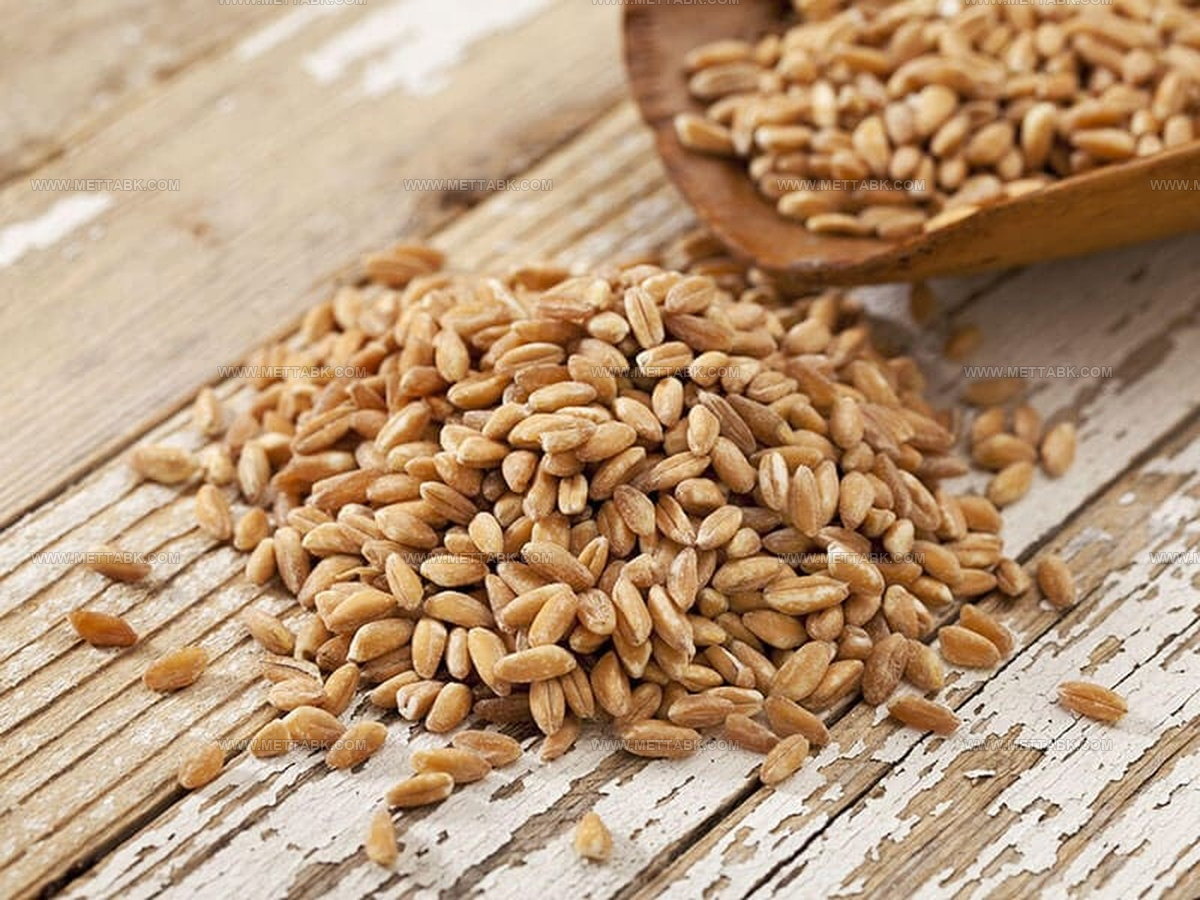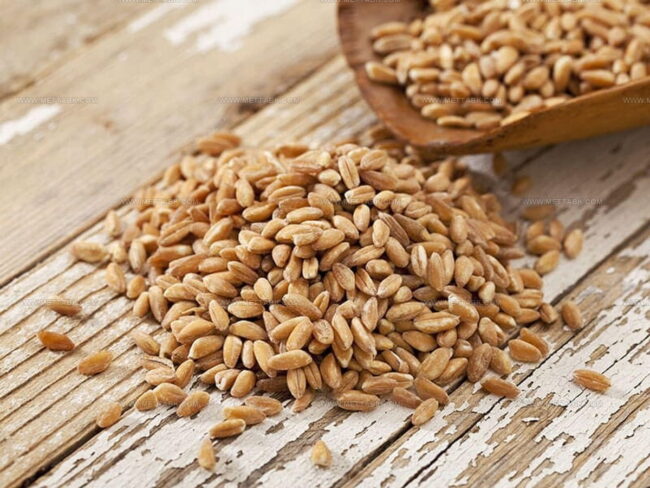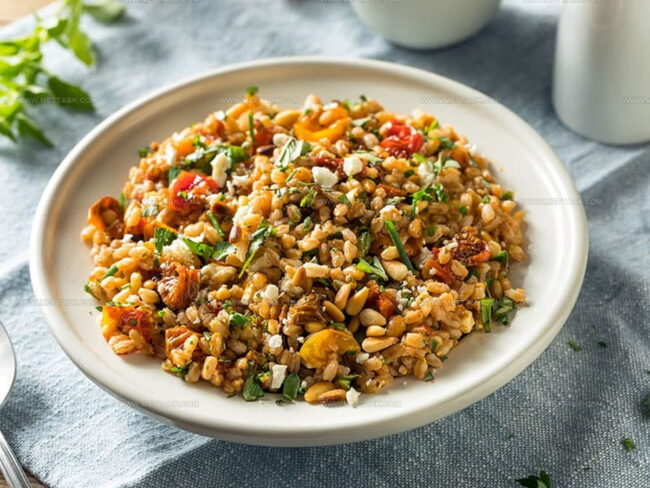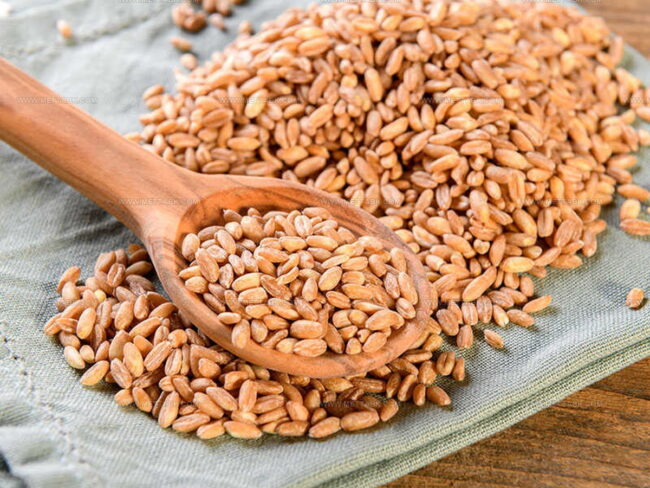What Does Farro Taste Like? A Nutty, Hearty Grain Awaits!
Ancient grains like farro have been capturing culinary attention for good reasons.
Nutritionists and chefs alike rave about this versatile wheat variety from the Mediterranean region.
Packed with robust nutritional benefits, farro brings more than just another grain to your plate.
Its unique texture and flavor profile make it stand out among traditional wheat alternatives.
Health-conscious food lovers continuously seek ingredients that offer both deliciousness and substantial nutrients.
Understanding farro's characteristics can transform your approach to wholesome eating and cooking.
Curious about how this grain might elevate your meals and nutrition? Let's uncover the delightful secrets of farro together.
Farro: What You Need To Know
Whole grain seekers can find a delicious solution with this classic ingredient.
Roots of this grain stretch back to ancient farming lands in Middle Eastern regions.
Grano farro serves as the original source for many grain varieties.
Farmers cultivate this special grain across several Italian regions including Lazio, Umbria, Tuscany, and Marches.
Cooking this grain brings unique texture to meals.
Its kernels stay firm and maintain shape during preparation.
Subtle flavor notes include hints of cashew and gentle cinnamon touches.
Soft sweetness mingles with rich nutty undertones, creating a warm taste profile.
Such versatile characteristics make this grain perfect for morning and evening meal creations!
What Does Farro Taste Like?
Farro looks similar to light brown rice with a unique flavor profile.
Its taste carries hints of nuts, oats, and barley, creating a rich depth.
Unlike heavy whole-wheat grains, farro feels more delicate and refined.
Curious about farro's taste?
This grain offers a delightful chewy texture with subtle caramel-like notes.
Visually, it resembles light brown rice but brings more complexity to meals.
When mixed with sauces or dressings, farro absorbs flavors beautifully.
Despite seeming plain, it delivers a wonderful eating experience.
Farro sports a golden brown shade and provides a satisfying chewy feel after cooking.
Chefs love this ingredient because it works well in many recipes.
You can enjoy farro in:
Home cooks appreciate farro for its ability to boost meal nutrition and taste.
Its versatility makes it a kitchen favorite that brings interesting textures and subtle flavors to different dishes.
Types of Farro: Flavor Comparison
Farro is an ancient grain with several types, each offering its own unique flavor and texture that can bring heartiness and warmth to any meal:
Cooking Methods For Farro
Farro soaks up flavors like a sponge, making it perfect for cooking with herbs, vegetables, broths, and stocks to boost taste.
Uncooked grains can quickly toast in a skillet before adding to boiling liquid for a richer nutty flavor.
Cooks have two main methods for preparing this grain:Farro in Salads, Soups, and Breakfast Dishes
Farro is a versatile grain that adds a hearty, nutty flavor and pleasant chew to a variety of dishes, making meals more satisfying and wholesome:Is Farro Healthy To Eat?
Farro packs a powerful nutritional punch with high amounts of dietary fiber, protein, and iron in each serving.
According to USDA Branded Food Products Database, a 1/4 cup portion of dried pearled farro contains 170 calories, 7 grams of protein, 1 gram of fat, 35 grams of carbs, 5 grams of fiber, and 2.3 milligrams of iron.
Wheat serves as farro's base, which means people with gluten sensitivity should steer clear.
Nutrition lovers can still enjoy this grain's many health benefits by preparing it carefully.
Vegetarians find farro especially appealing as a protein source.
Breakfast and dinner menus welcome this versatile grain that works well for both vegetarian and vegan diets.
Some challenges exist in cooking farro correctly, so careful preparation matters.
Smart shoppers can find nutrient-rich options, including gluten-free varieties that offer excellent nutrition.
Does Farro Taste Better Than Quinoa?
Farro stands as a tasty grain alternative for those who dislike quinoa's nutty taste and unusual texture.
Packed with nutrition, farro contains up to 8 grams of fiber and protein per half-cup, while quinoa offers only 2.5 grams of fiber and 4 grams of protein.
These grains compete closely in nutritional value.
Farro edges ahead by providing nearly double the nutrients in a similar serving size.
Quinoa balances this competition by delivering all nine essential amino acids and helpful antioxidants.
Health-conscious eaters appreciate quinoa for its gluten-free status and protein content, making it ideal for vegetarian and vegan diets.
Quinoa ultimately wins with its remarkable versatility.
Considered a superfood, it continues to gain popularity.
Farro resembles rice and barley but features a lighter look and more complex flavor profile.
Its texture mirrors brown rice, yet feels chewier and more robust.
Less dense than other grains, farro remains deliciously satisfying.
Cooks appreciate its flexibility in numerous dishes - from pasta and sandwiches to fresh salads.
Is Farro A Source Of Protein Or Carbs?
Grain choices matter for health, and farro stands out as a smart option.
This hearty grain offers more than just basic nutrition.
Several key benefits make farro an excellent addition to meals.
Farro works well as a carbohydrate source with impressive health advantages over typical refined grains.
Most people seek better eating habits, and this grain delivers positive results.
Digestive health improves when farro enters your diet.
Fiber in this grain supports smooth digestive system functions.
Individuals struggling with stomach issues like constipation or irritable bowel syndrome might find relief through regular farro consumption.
Weight management becomes easier with farro in meal plans.
While direct research remains limited, several factors suggest this grain helps maintain healthy body weight.
High fiber and protein content play significant roles in supporting weight control efforts.
Protein within farro creates feelings of fullness, which naturally reduces overeating risks.
Scientific research indicates consuming three whole grain servings daily connects with lower body mass index numbers.
Small dietary changes like adding farro can make substantial differences in overall wellness.
Nutritional experts appreciate how this simple grain supports multiple health goals.
Balanced eating becomes more enjoyable with such versatile ingredients.
Farro represents more than just another food - it serves as a smart choice for those seeking healthier meal options.
Meals become more satisfying and nutritious when farro enters the mix.
Minimal preparation, maximum benefits describe this wonderful grain perfectly.
Simple swaps in daily eating patterns can lead to meaningful health improvements.





Nate Harper
Founder & Recipe Curator
Expertise
Single-Recipe Development, Farm-to-Table Cooking, Seasonal Menu Planning, Culinary Storytelling, Home Kitchen Innovation
Education
Cascade Culinary Institute – Central Oregon Community College
Certificate in Culinary Arts
Focus: Farm-to-table cuisine, sustainable cooking practices, and seasonal recipe creation.
Nate studied under experienced chefs who emphasized local sourcing, minimal waste, and building recipes from fresh, simple ingredients.
Nate Harper is the founder and creative force behind Make, Take, Bake. Raised in the wild beauty of Oregon’s high desert, Nate grew up surrounded by family gardens, farmers’ markets, and home kitchens that celebrated the seasons.
His early love for simple, honest food evolved into a professional passion when he attended Cascade Culinary Institute, where he sharpened his skills in creating recipes that are sustainable, satisfying, and made for everyday life.
Nate’s goal is to make cooking feel accessible, free of fuss, and full of flavor. He believes a single, thoughtfully built dish can stand alone, and sometimes even steal the show.